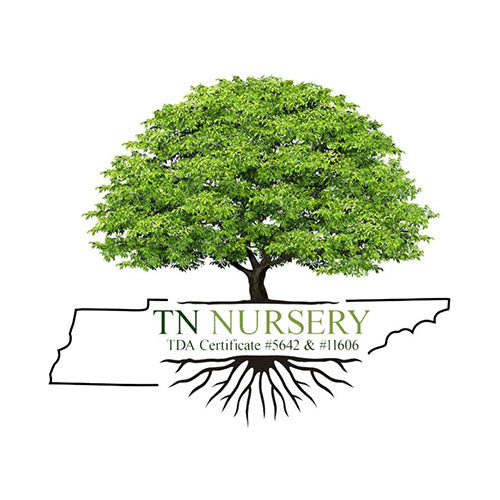A Comprehensive Guide
Utilizing every area of your property with native plants is a sustainable and environmentally friendly choice and a way to create a beautiful and harmonious landscape. Native plants are well adapted to your region's climate and soil, making them low-maintenance and beneficial for local wildlife. In this guide, we will explore how to make the most of your property by incorporating native plants into different areas, focusing on several varieties, including creeping phlox, lady ferns, bracken ferns, fiddlehead ferns, lobelia plants, hostas, and bugleweed.
Creeping Phlox (Phlox subulata)
Creeping phlox is a versatile ground cover native to North America. Its low-growing, spreading nature makes it an excellent choice for various areas of your property:
a) Rock Gardens: Creeping phlox thrives in rocky or sandy soil, making it a fantastic addition to rock gardens. Its vibrant pink, purple, or white flowers create a stunning contrast against the rugged landscape.
b) Slopes and Hillsides: Planting creeping phlox on slopes and hillsides helps control erosion while providing a colorful carpet of blooms in spring. Its dense mat of foliage also suppresses weeds.
c) Path Edging: Use creeping phlox to edge garden paths or walkways. Its trailing stems create a soft, natural border that adds visual interest and color.
Lady Ferns (Athyrium filix-femina)
Lady ferns are graceful, feathery ferns native to North America. They can be incorporated into various areas of your property:
a) Woodland Gardens: Lady ferns thrive in the dappled shade of wooded areas. Plant them beneath trees or alongside other native woodland plants to create a serene and lush atmosphere.
b) Shady Borders: Use lady ferns to soften the edges of shady borders or mixed perennial beds. Their delicate fronds add an elegant touch to the landscape.
c) Rain Gardens: These ferns are well-suited for rain gardens or areas with periodic waterlogging. Their extensive root systems help stabilize soil and prevent erosion.
Bracken Ferns (Pteridium aquilinum)
Bracken ferns are common in many regions and are known for their large, triangular fronds. Here's how you can utilize them on your property:
a) Naturalizing Open Spaces: Bracken ferns are often found in open fields and meadows. To create a naturalized look, allow them to grow where there is full sun or partial shade.
b) Wildlife Habitats: These ferns provide shelter and forage for wildlife. Encourage biodiversity by allowing bracken ferns to grow in sections of your property dedicated to supporting native fauna.
Fiddlehead Ferns (Various Species)
Fiddlehead ferns are the tightly coiled, young fronds of several fern species. While they are not a permanent planting option, you can enjoy them as a seasonal delicacy by foraging for them in the wild or planting fern species that produce edible fiddleheads. They can be found in moist, shaded areas.
Lobelia Plants (Lobelia spp.)
Lobelia plants are a group of native wildflowers known for their striking blue or red blooms. Here's how you can use them:
a) Wetland Gardens: Lobelia species like Lobelia cardinalis are perfect for wetland or pond-edge gardens. Their vivid colors attract pollinators and provide a burst of color in damp areas.
b) Rain Gardens: Lobelias can be included in rain gardens to help manage excess water while adding a pop of color.
Hostas (Hosta spp.)
Hostas are not native plants but are widely used in landscaping due to their attractive foliage. You can still incorporate them while focusing on native plants:
a) Shaded Areas: Hostas thrive in shaded or partially shaded areas, making them an ideal choice for creating lush green borders in spots where native plants may struggle.
b) Containers: Plant hostas in containers on patios or porches to bring greenery and texture to these spaces.
Bugleweed (Ajuga reptans)
Bugleweed is a low-growing, native ground cover with attractive purple or blue flowers. It can be used in several ways:
a) Lawn Alternatives: Replace traditional lawns with bugleweed in areas with limited foot traffic. Its dense growth suppresses weeds and requires less mowing.
b) Under Trees: Plant bugleweed beneath trees where grass struggles to grow due to shade. Planting here will create a lush carpet and reduce the need for maintenance.
Maximizing every area of your property with native plants, including creeping phlox, lady ferns, bracken ferns, fiddlehead ferns, lobelia plants, hostas, and bugleweed, not only enhances its beauty but also supports local ecosystems and reduces maintenance. By carefully selecting native plants for various environmental conditions, you can create a sustainable and aesthetically pleasing landscape that benefits you and the environment. Take the time to research the native plants that thrive in your region and plan your landscaping accordingly to make the most of your property.
